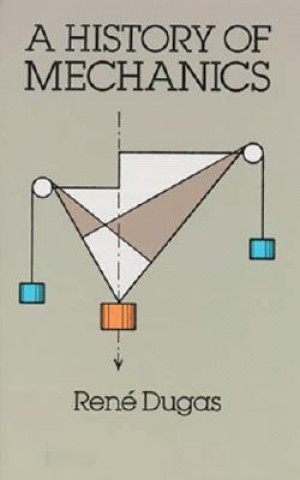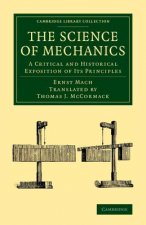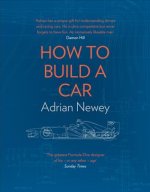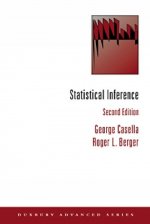
Doručení
Nákupní rádce





Nehodí se? Vůbec nevadí! U nás můžete do 30 dní vrátit
 Dárkový poukaz
V libovolné hodnotě
Dárkový poukaz
V libovolné hodnotě
S dárkovým poukazem nešlápnete vedle. Obdarovaný si za dárkový poukaz může vybrat cokoliv z naší nabídky.
History of Mechanics
 Angličtina
Angličtina
 63 b
63 b
30 dní na vrácení zboží
Zákazníci také koupili


PREFACE PART ONE THE ORIGINS CHAPTER ONE. - HELLENIC SCIENCE 1. Aristotelian mechanics 2. The Statics of Archimedes CHAPTER II. - ALEXANDRIAN SOURCES AND ARABIC MANUSCRIPTS 1. "The "mechanics" of Hero of Alexandria" 2. Pappus' theories of the inclined plane and of the centre of gravity 3. The fragments attributed to Euclid in arabic writings 4. The book of Charistion CHAPTER III. - THE XIIIth CENTURY. THE SCHOOL OF JORDANUS 1. "Jordanus of Nemore and "gravitas secundum situm" 2. "The anonymous author of "Liber Jordani de ratione ponderis." The angular lever. The inclined plane" CHAPTER IV. - THE XIVth CENTURY. THE SCHOOLS OF BURIDAN AND ALBERT OF SAXONY. NICOLE ORESME AND THE OXFORD SCHOOL 1. "The doctrine of "impetus" (John Buridan)" 2. The sphericity of the earth and the oceans-Albert of Saxony and the aristotelian tradition 3. Albert of Saxony's theory of centre of gravity 4. Albert of Saxony's kinematics. The acceleration of falling bodies 5. The discussion of action at a distance 6. Nicole Oresme-a disciple of Buridan 7. Oresme's rule in kinematics. (Uniformly accelerted motion.) 8. Oresme as a predecessor of Copernicus 9. The Oxford School 10. The tradition of Albert of Saxony and of Buridan CHAPTER V. - XVth AND XVIth CENTURIES. THE ITALIAN SCHOOL. BLASIUS OF PARMA. THE OXFORD TRADITION. NICHOLAS OF CUES AND LEONARDO DA VINCI. NICHOLAS COPERNICUS. THE ITALIAN AND PARISIAN SCHOOLMEN OF THE XVIth CENTURY. DOMINIC SOTO AND THE FALL OF BODIES 1. Blasius of Parma and his treatise on weights 2. The Italian tradition of Nicole Oresme and the Oxford School 3. "Nicholas of Cues (1404-1464) and the doctrine of "impetus impressus" 4. Leonardo da Vinci's contribution to mechanics 5. Nicholas Copernicus (1472-1543). His system of the world and his ideas on attraction 6. John Fernel (1497-1558) and the figure of the earth 7. Italian scholasticism in the XVIth century 8. Parisian scholasticism in the XVIth century 9. The attack of the humanists 10. Dominic de Soto (1494-1560) and the laws of falling bodies CHAPTER VI. - XVIth CENTURY (continued) THE ITALIAN SCHOOL OF NICHOLAS TARTAGLIA AND BERNARDINO BALDI 1. Nicholas Tartaglia 2. Jerome Cardan (1501-1576) 3. Julius-Caesar Scaliger and Buridan's doctrine 4. Bento Pereira (1535-1610). The classical reaction 5. "The "Mechanicorum Liber" of Guido Ubaldo (1545-1607)" 6. J.-B. Villalpand (1552-1608) and the polygon of sustentation 7. "J.-B. Benedetti (1530-1590). Statics. Figure of the earth. Doctrine of "impetus" 8. Giordano Bruno (1548-1600) and the composition of motion 9. "Bernardino Baldi (1553-1617). Statics and gravity "exviolentia" CHAPTER VII. - XVIth CENTURY (continued). XVIIth CENTURY. TYCHO-BRAHE AND KEPLER 1. The system due to Tycho-Brahe (1546-1601) 2. Kepler (1571-1631). The general chracter of his contribution 3. The origin of the law of areas 4. Origin of the law of the ellipticity of planetary trajectories 5. Kepler's third law 6. Kepler and the concept of inertia 7. Kepler and the doctrine of attraction PART II THE FORMATION OF CLASSICAL MECHANICS CHAPTER I. - STEVIN'S STATICS. SOLOMON OF CAUX 1. The statics of Stevin (1548-1620) 2. Stevin and the principle of virtual work 3. Stevin's hydrostatics 4. Solomon of Caux (1576-1630) and the concept of work CHAPTER II. - GALILEO AND TORRICELLI 1. Galileo's statics 2. Galileo and the fall of bodies 3. Galileo and the motion of projectiles 4. Galileo and the hydrostatics 5. Galileo and the Copernican system 6. Torricelli's principle 7. Torricelli and the motion of projectiles 8. Torricelli's experiment 9. Torricelli's law flow through an orifice CHAPTER III. - MERSENNE (1588-1648) AS AN INTERNATIONAL GO-BETWEEN IN MECHANICS. ROBERVAL (1602-1675) 1. The arrival of foreign theories in France. The part played by Mersenne 2. Roberval and compound motion 3. Roberval's treatise on mechanics 4. Roberval and the law of composition of forces CHAPTER IV. - DESCARTES' MECHANICS. PASCAL'S HYDROSTATICS 1. Descartes' statics 2. Descartes and the fall of heavy bodies 3. Descartes and the conservation of quantities of motion 4. Descartes and the impact of bodies 5. The discussion between Descartes and Roberval on the centre of agitation 6. The quarrel about geostatics 7. Pascal's hydrostatics "CHAPTER V. - THE LAWS OF IMPACT (WALLIS, WREN, HUYGHENS, MARIOTTE). THE MECHANICS OF HUYGHENS (1629-1697)" 1. The mechanics of Wallis (1616-1703) 2. Wren (1632-1723) and the laws of elastic impact 3. Huyghens (1629-1697) and the laws of impact 4. The plan of Huyghens' fundamental treatise 5. Huyghens and the fall of bodies 6. The isochronism of the cycloidal pendulum 7. The theory of the centre of oscillation 8. The theory of centrifugal force 9. Huyghens and the principle of relativity 10. Mariotte and the laws of impact CHAPTER VI. - NEWTON (1642-1727) 1. The newtonian method 2. The newtonian concepts 3. The newtonian laws of motion 4. Newton and the dynamical law of composition of forces 5. The motion of a point under the action of a central force 6. Newton's explanation of the motion of the planets 7. The universal attraction CHAPTER VII. - LEIBNIZ AND LIVING FORCE 1. "The "vis motrix" in the sense of Leibniz" 2. Leibniz and the laws of impact 3. Living and dead forces CHAPTER VIII. - THE FRENCH-ITALIAN SCHOOL OF ZACCHI AND VARIGNON 1. Zacchi and Saccheri. Lamy and the composition of forces 2. The statics of Varignon (1654-1722) 3. Varignon and Torricelli's law of flow PART III THE ORGANISATION AND DEVELOPMENT OF THE PRINCIPLES OF CLASSICAL MECHANICS IN THE XVIIIth CENTURY CHAPTER I. - JEAN BERNOULLI AND THE PRINCIPLE OF VIRTUAL WORK (1717). DANIEL BERNOULLI AND THE COMPOSITION OF FORCES (1726) 1. Jean Bernoulli and the principle of virtual work 2. Daniel Bernoulli and the composition of forces CHAPTER II. - THE CONTROVERSY ABOUT LIVING FORCES CHAPTER III. - EULER AND THE MECHANICS OF A PARTICLE (1736) CHAPTER IV. - JACQUES BERNOULLI AND THE CENTRE OF OSCILLATION (1703). D'ALEMBERT'S TREATISE ON DYNAMICS (1743) 1. Jacques Bernoulli and the centre of oscillation 2. The introductory argument of d'Alembert's Treatise on dynamics 3. D'Alembert and the concept of accelerating force 4. D'Alembert's principle 5. D'Alembert's solution of the problem of the centre of oscillation 6. The priority of Herman and Euler in the matter of d'Alembert's principle 7. D'Alembert and the laws of impact 8. D'Alembert and the principle of living forces CHAPTER V. - THE PRINCIPLE OF LEAST ACTION 1. Return to Fermat 2. Cartesian objections to Fermat's principle 3. "Leibniz and the path of "least resistance" for light" 4. Maupertuis' law of rest 5. The principle of least action in Maupertuis' sense (1744) 6. The application of the principle of least action to the direct impact of two bodies 7. The principle of least action in Maupertuis' work 8. D'Alembert's condemnation of final causes 9. The polemic on the principle of least action 10. Euler's judgment on the controversy on least action 11. Euler and the law of the extremum of ? mvds 12. Final remark CHAPTER VI. - EULER AND THE MECHANICS OF SOLID BODIES (1760) CHAPTER VII. -CLAIRAUT AND THE FUNDAMENTAL LAW OF HYDROSTATICS 1. Clairaut's principle of the duct 2. The condition to be satisfied by the law of gravity to assure the conservation of the shape of a rotating fluid mass 3. CHAPTER VIII. - DANIEL BERNOULLI'S HYDRODYNAMICS. D'ALEMBERT AND THE RESISTANCE OF FLUIDS. EULER'S HYDRODYNAMICAL EQUATIONS. BORDA AND THE LOSSES OF KINETIC ENERGY IN FLUIDS 1. Return to the hydrodynamics of the XVIIth century 2. Daniel Bernoulli's hydrodynamics 3. D'Alembert and the motion of fluids 4. D'Alembert and the resistance of fluids - His paradox 5. Euler and the equilibrium of fluids 6. Euler and the general equations of hydrodynamics 7. Borda and the losses of kinetic energy in fluids "CHAPTER IX. - EXPERIMENTS ON THE RESISTANCE OF FLUIDS (BORDA, BOSSUT, DU BUAT). COULOMB AND THE LAWS OF FRICTION" 1. Borda's experiments and newtonian theories 2. The abb
Informace o knize
 Angličtina
Angličtina
Kategorie




 Jak nakupovat
Jak nakupovat


































